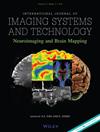Quantitative Susceptibility Mapping MRI With Computer Vision Metrics to Reduce Scan Time for Brain Hemorrhage Assessment
Abstract
Optimizing clinical imaging parameters balances scan time and image quality. quantitative susceptibility mapping (QSM) MRI, particularly, for detecting intracranial hemorrhage (ICH), involves multiple echo times (TEs), leading to longer scan durations that can impact patient comfort and imaging efficiency. This study evaluates the necessity of specific TEs for QSM MRI in ICH patients and identifies shorter scan protocols using computer vision metrics (CVMs) to maintain diagnostic accuracy. Fifty-four patients with suspected ICH were retrospectively recruited. multiecho gradient recalled echo (mGRE) sequences with 11 TEs were used for QSM MRI (reference). Subsets of TEs compatible with producing QSM MRI images were generated, producing 71 subgroups per patient. QSM images from each subgroup were compared to reference images using 14 CVMs. Linear regression and Wilcoxon signed-rank tests identified optimal subgroups minimizing scan time while preserving image quality as part of the computer vision optimized rapid imaging (CORI) method described. CVM-based analysis demonstrated Subgroup 1 (TE1-3) to be optimal using several CVMs, supporting a reduction in scan time from 4.5 to 1.23 min (73% reduction). Other CVMs suggested longer maximum TE subgroups as optimal, achieving scan time reductions of 9%–37%. Visual assessments by a neuroradiologist and trained research assistant confirmed no significant difference in ICH area measurements between reference and CORI-identified optimal subgroup-derived QSM, while CORI-identified worst subgroups derived QSM differed significantly (p < 0.05). The findings support using shorter QSM MRI protocols for ICH evaluation and suggest CVMs may aid optimization efforts for other clinical imaging protocols.

 求助内容:
求助内容: 应助结果提醒方式:
应助结果提醒方式:


